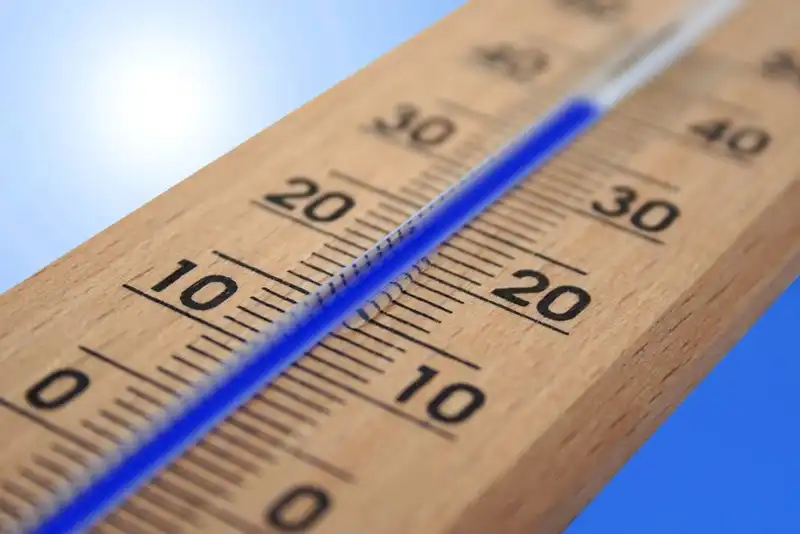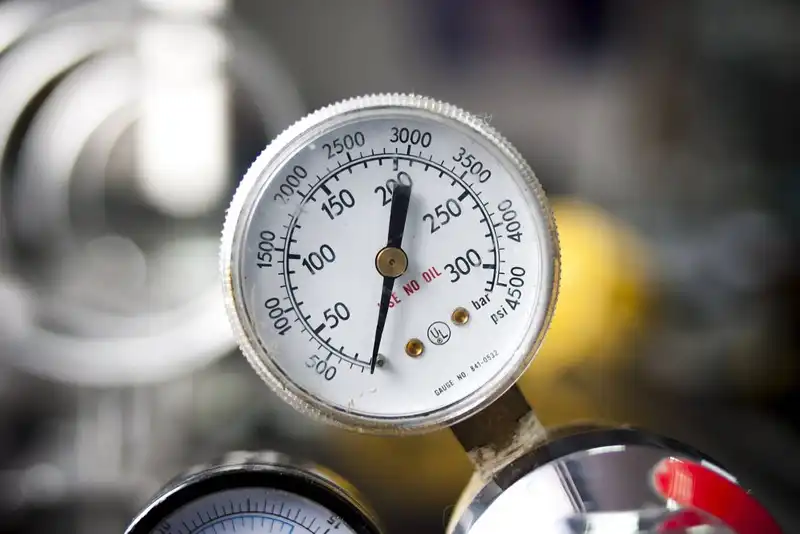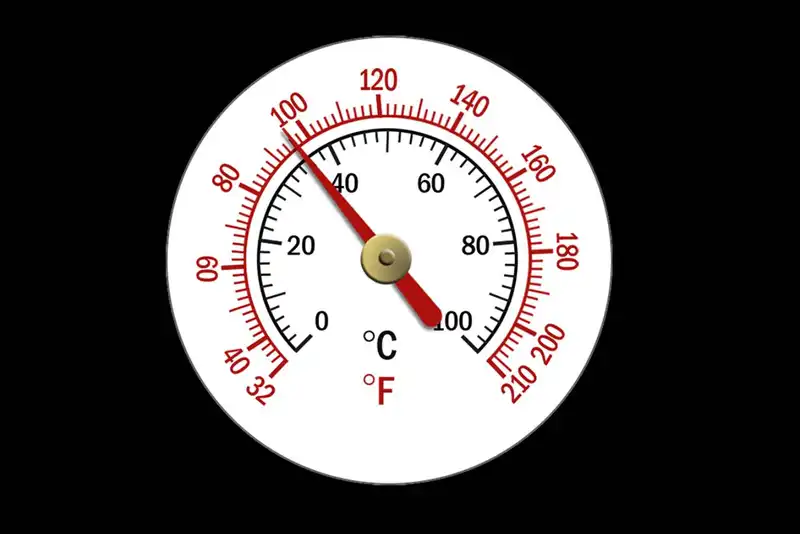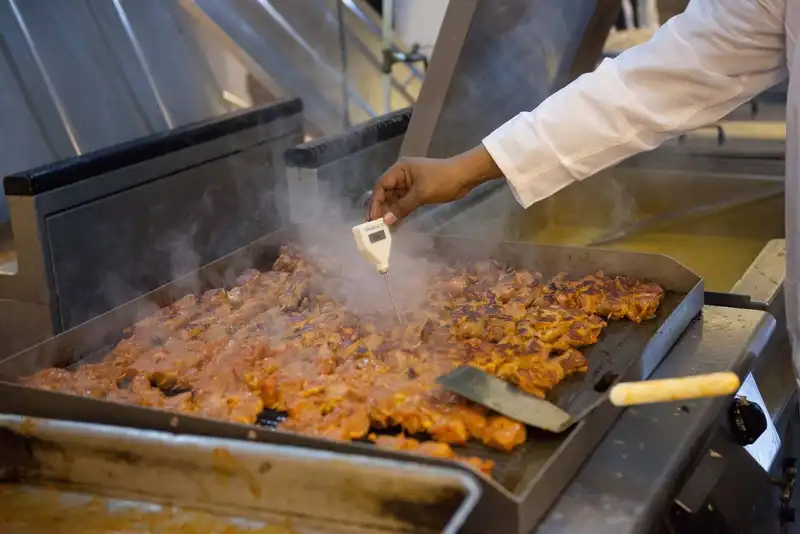Temperature Monitoring in Restaurants- What's It All About?

Why is Temperature Monitoring Important?

Food industry professionals use temperature monitoring systems to ascertain if a food product has become contaminated by bacteria and is therefore unsafe for consumption. Although we cannot see the bacteria with a naked eye, it is an ever-present part of nature that exists in soil, air, water, and the food we consume.
The amount of bacteria a person ingests directly correlates with the potential of becoming ill. Ingesting a small portion of disease-causing bacteria can either cause mild illness or have no effect at all. However, these same bacteria can cause very severe to fatal illness when consumed in mass volumes.
If food is not held at the appropriate temperature, pathogenic bacteria may reproduce rapidly. This greatly increases the risk of foodborne illness, causing safety violations for the business.
Thankfully, there are methods that food industry professionals can undertake to decrease the proliferation and transmission of bacteria, including strict and consistent temperature monitoring systems.
Mitigating bacterial growth through careful temperature monitoring systems is an effective way to protect customers from foodborne illnesses. Bacteria grow most rapidly in the danger zone temperature range which is between 40-140 degrees Fahrenheit. In this zone, bacteria doubles in number in as quickly as 20 minutes.
Regardless if you are cooking, preparing, or holding food, industry professionals must vigilantly oversee temperatures in order to avoid the danger zone temperature range and provide the safest food products possible.
Temperature Monitoring and Food Safety

Regular and frequent temperature monitoring systems are the easiest way to ensure food products adhere to regulatory compliance.
When cooking, always use an accurate probe thermometer positioned in the center of the food to obtain a valid reading. Once the ideal thermometer reading is achieved, ensure the reading stays consistent for at least 15 seconds to allow maximal bacteria elimination.
Below is a helpful table that all food industry professionals should become familiar with. The table provides guidelines on some commonly cooked foods, providing the minimum internal temperature and rest times.
| Product | Minimum Internal Temperature & Rest Time |
| Beef, Pork, Veal & Lamb Steaks, chops, roasts | 145 F (62.8 C) and allow to rest for at least 3 minutes |
| Ground meats | 160 F (71.1 C) |
| Ham, fresh or smoked (uncooked) | 145 F (62.8 C) and allow to rest for at least 3 minutes |
| Fully Cooked Ham (to reheat) | Reheat cooked hams packaged in USDA-inspected plants to 140 F (60 C) and all others to 165 F (73.9 C). |
| Product | Minimum Internal Temperature |
| All Poultry (breasts, whole bird, legs, thighs, wings, ground poultry, giblets, and stuffing) | 165 F (73.9 C) |
| Eggs | 160 F (71.1 C) |
| Fish & Shellfish | 145 F (62.8 C) |
| Leftovers | 165 F (73.9 C) |
- Check the temperature of your refrigerator or freezer consistently
- Consider employing a secondary refrigerator or freezer thermometer, as the thermometer built into your appliance may not be accurate
- Keep a written record, including the thermometer reading and the exact time observed. This step provides the added benefit of creating records to prove that critical temperatures were met throughout your process and across the food supply chain, from production to consumption. Various food safety regulatory compliance industries may request these records, so it is helpful to have them readily accessible
- Clean and calibrate thermometers regularly to ensure you are getting the most accurate reading possible
- Frequently test employee understanding of proper thermometer handling and usage
- Consider purchasing a digital temperature monitoring systems for constant supervision
Use a thermometer to check hot or cold food at least every four hours. If products are checked every two hours, food industry professionals will have enough time to take corrective action if the danger zone temperature range has been breached.
Corrective action can be as simple as reheating or rechilling the affected foods before bacteria has time to further spread. Improper temperature monitoring could result in foodborne illness, disastrous safety regulatory compliance violations, and massive unnecessary food waste.
How is Your Business Affected?

Although the United State's food supply is one of the safest in the world, the CDC estimates that each year roughly 48 million people, or roughly 1 in 6 Americans, get sick as a result of foodborne diseases.
Of these infected people, 128,000 people are hospitalized and 3,000 will die. These illnesses and deaths are especially tragic because they are largely the fault of preventable food safety mistakes.
A foodborne illness outbreak occurs when two or more people get the same illness from the same contaminated source. When a foodborne illness outbreak is suspected, various food safety administrations step in to investigate and attempt to mitigate the spread of the outbreak.
Technology has vastly improved the ability to find, investigate, and the CDC provides an updated list of recent food outbreaks for consumer reference.
When so many foods are coming from the same sources, it is especially important to maintain vigilant temperature monitoring systems throughout the food supply chain.
A foodborne illness outbreak could bring massive financial consequences to your business in the form of lawsuits, fines, penalties, and even permanent closure of your business.
Cutting Back on Wasted Food

Although 820 million people suffer from hunger, 1/3rd of food produced globally is produced in mass amounts and unfortunately lost to waste. The United States wastes the most food per capita of any country, resulting in massive economic and environmental consequences.
A single restaurant can waste approximately 25,000 to 75,000 pounds of food annually. In addition to wasting countless hours of employee time, the restaurant sector throws away almost $850 million dollars worth of food each year.
To avoid this from occurring, ensure that, regardless of whether your food is being cooled, reheated, stored, or held, it is always maintained at the correct temperature. With proper temperature monitoring systems, you will reduce your food waste footprint and save money spent on perishable items.
Improving Profits Through Proper Temperature Monitoring Systems

85% of restaurant food safety and product loss issues involve temperature or time controls. Improper management of food temperature is simply a bad business strategy that financially costs both food industry professionals and their customers.
In the United States, the cost of food waste to consumer-facing businesses is $54.7 billion. Food industry professionals can create a more economically, environmentally, and socially sustainable restaurant culture through proper temperature monitoring systems.
There are various systems available to assist with food safety monitoring. The most efficient and comprehensive temperature monitoring system is Hazardous Analysis and Critical Control Points (HACCP) compliant.
HACCP represents substantial new regulatory compliance requirements that include unprecedented coverage of all stages of the food supply chain. Through careful regulatory compliance with all of the HACCP rules regarding monitoring, your restaurant would never have to toss food out as a result of a temperature mistake.
Temperature monitoring systems are comprehensive data loggers and temperature loggers that allow easier data acquisition, regulatory compliance, help to identify dangers and reduce the potential for human error by utilizing historical data.
There are many tools available to incorporate into food temperature monitoring systems, including remote temperature sensors and devices requiring internet connectivity. These systems, software, and tools provide product temperature monitoring throughout the entire transportation and delivery process.
Reasons to Prioritize Temperature Monitoring Systems
Continuous monitoring of digital temperatures is essential for your business to provide the highest quality and safest products possible. Remote monitoring systems allow accurate time and temperature controls. In turn, food industry professionals can decrease foodborne illness outbreaks, food waste, and other improper monitoring consequences.
Shockingly, less than 5% of companies in the hospitality and restaurant industries use automated temperature sensors.
There are four key reasons to utilize digital temperature sensors for continuous temperature monitoring systems- food safety improvement, product loss reduction, human error reduction, and staff notification of equipment failure and downtime reduction.
Proper temperature monitoring systems are a pillar of food safety etiquette and necessary for preventing foodborne illness outbreaks and safety concerns. 24/7 sensors ensure that equipment is working properly through continuous monitoring of food temperatures.
Digital temperature sensors provide proactive alerts to any temperature issues that could create food safety risks. Food industry professionals can then perform corrective actions, which will not only prevent foodborne illness.
Food industry professionals can reduce food waste and product loss through digital temperature monitoring systems. Food industry professionals can use digital temperature monitoring solutions to keep an eye on their equipment and products around the clock, and from wherever they are located.
Digital temperature monitoring alerts for equipment failures that occur outside of working hours, including between shifts or overnight. Digital temperature monitoring monitors will send real-time alerts to staff for any breach in the system, allowing staff to undertake the appropriate corrective actions.
Through the implementation of a digital temperature monitoring system, it can help to prevent the unnecessary spread of foodborne illness outbreaks.
Many common human errors can be eliminated through digital temperature monitoring. Mistakes happen, perhaps a staff member forgot to measure temperatures or measures temperatures incorrectly. Though not intentional, these mistakes can be catastrophic to the reputation of a business.
Digital temperature monitoring can alert staff to equipment failure and reduce downtime. Failure to immediately notice an equipment failure can slow down service time and limit what menu items will be available to customers.
For example, an employee could not notice a malfunctioning walk-in cooler and as a result, it goes unnoticed overnight. After this food has spent so much time in the danger zone temperature range it could cause serious foodborne illness.
Now the product must be disposed of. As a result, there may be food shortages for the next upcoming shifts. Automated digital temperature sensors that alert food industry professionals in real-time enable rapid corrective response and reduced or avoided downtime.
With the proper digital monitoring solution, food industry professionals can safely save product and money while increasing the safety and satisfaction of their customers.
Key Takeaways
- Continuous temperature monitoring systems are crucial in order to decrease food wastefulness, prevent foodborne illness outbreaks, and increase overall business profitability.
- Regardless if you are cooking, preparing, or holding food, food industry professionals must vigilantly oversee temperatures in order to avoid the danger zone temperature range and provide food products that adhere to regulatory compliance.
- Continuous temperature monitoring is the easiest way to create and maintain non-contaminated and safety compliant food products. While cooking, preparing, or holding food, food industry professionals must be knowledgeable about specific monitoring protocols.
- Although the United State's food supply is one of the safest in the world, the CDC estimates that each year roughly 48 million people, or roughly 1 in 6 Americans, get sick as a result of foodborne diseases. Of these infected people, 128,000 people are hospitalized and 3,000 people will die.
- A food outbreak occurs when two or more people get the same illness from the same contaminated source. A food outbreak could bring massive financial consequences to your business via lawsuits, fines, penalties, and even permanent closure of your business.
- A single restaurant can waste approximately 25,000 to 75,000 pounds of food per annum. In addition to wasting countless hours of employee time, the restaurant sector throws away almost $850 million dollars worth of food each year.
- 85% of restaurant food safety and product loss issues involve temperature or time controls.
- Shockingly, less than 5% of companies in the hospitality and restaurant industries use remote temperature sensors. There are four key reasons to utilize digital temperature sensors as data loggers- food safety improvement, product loss reduction, human error reduction, and staff notification of equipment failure and downtime reduction.
- With the proper digital monitoring solution, food industry professionals can safely save product and money while increasing the safety and satisfaction of their customers.